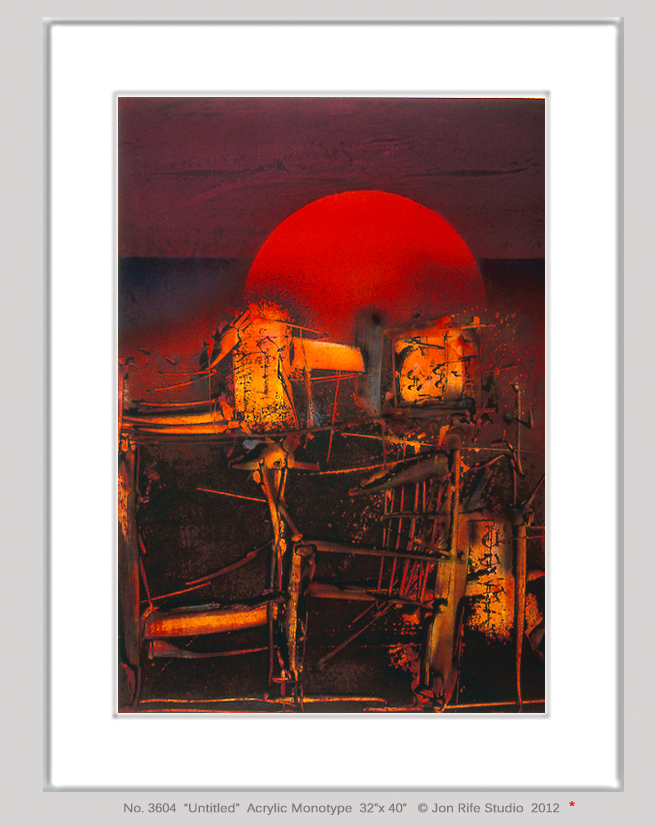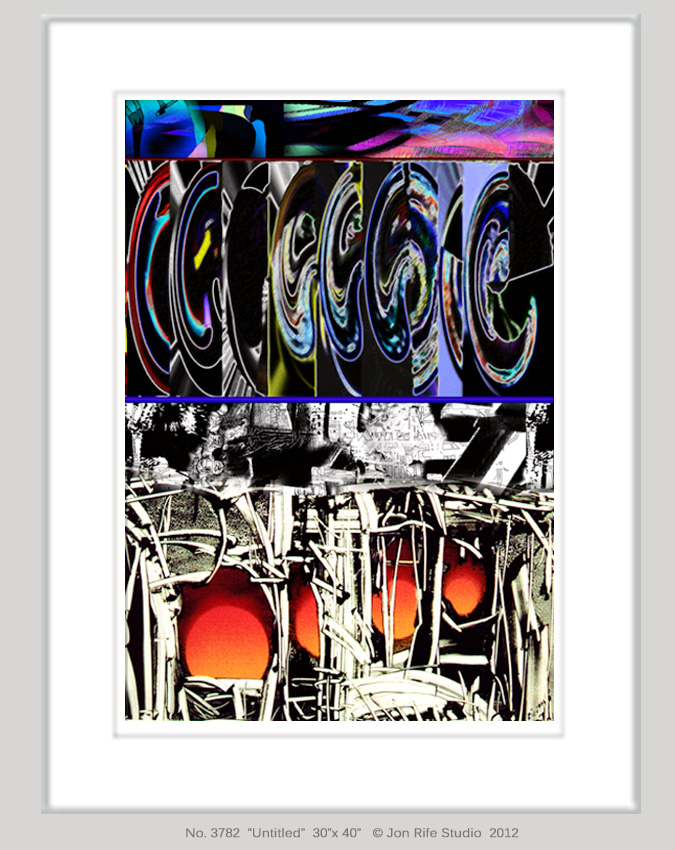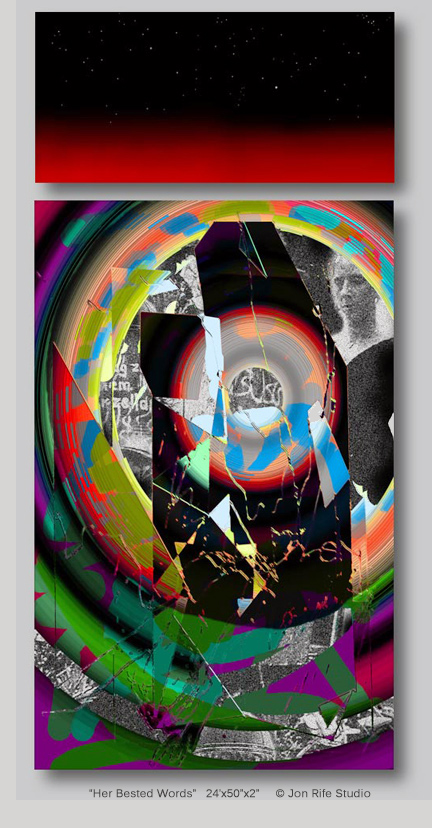|
|
| |
 |
|
The
Monotype or Monoprint
As
the name monotype implies, it is a unique and singular print.
A transfer to paper or canvas from a smooth flat non-absorbent
surface (glass, Plexiglas, acetate, zinc or copper) which I
have directly painted with brush or other non-incisive tools.
I began painting monotypes in 1979 and was inspired by the spontaneity
and the freshness of the medium. For several years painting
on zinc plates and printing the monotypes with an etching press,
I produced an extensive body of oil-based works. During this
period the toxicity of the oil-based medium began to affect
my health, so in 1991 I stopped making monotypes. I continued
to paint directly on canvas and paper with water-based oil and
acrylic paint. One day, while making a collage element on a
canvas surface, due to an accident, I discovered a method of
using acrylic paint to produce monotypes. For several years
my monotypes became thoroughly experimental as this new process
was perfected. In the course of this investigation, I experienced
a special technique of making an archival monotype superior
to its oil-based predecessor. To my surprise all the traditional
flavors that one would expect to view in a monotype were present;
the only exception is the lack of a plate mark created by the
pressure of the etching press. The etching press is not used
in this new process; instead, the transfer from the plate is
executed by hand. Because the plate surface is smooth and non-absorbent,
the limitless workable viscosity of paint creates many exciting
surfaces and textures.
I have found this new technique to be rich in possibilities
both for new effects in color and texture and in its ability
to move the viewer. These new works address fabrics, light and
shadow, landscapes, and the metropolis.
|
|
| |
|
|
|
|
| |
 |
|
Printmaking
The
Archival Inkjet Print (Giclée)
Inkjet
technology is little more than a couple of decades old. That's
nothing when you consider it was over 500 years ago when Johannes
Gutenberg invented the printing press and artists such as Albrecht
Dürer, Martin Schongauer, and Lucas van Leyden began printing
engravings. By many accounts, the use of inkjet printers to create
fine art began in 1990, in Venice Beach, California, where musician
Graham Nash began experimenting with methods of outputting reproductions
of his computer-enhanced black and white photographs.
After more than a year of research, Nash discovered the Iris 3047
graphics printer, but wasn't satisfied with the surface quality
of standard Iris papers. So, he and partner R. Mac Holbert began
modifying the printer and its software so they could print on
a variety of quality papers. After much experimentation and some
initial successes, they produced the first giclée or Inkjet
print. The term giclée is tossed around rather freely when
it comes to printmaking, which simply adds to your confusion when
someone trying to sell you art by the next Picasso launches into
art-speak. Originally, giclée applied to output on an Iris
inkjet printer, specifically the Iris 3024, 3047, or the 3047G
(renamed the Iris GPRINT in 1998). But today, depending on who
you talk to, giclée refers a scanned or photographic reproduction
of an original artwork printed with any archival quality inkjet
printer. The prints seen here are not reproductions of other artworks;
they are the original artwork as limited edition digital stylus
drawings. The colored inks are pigmented, so the longevity exceeds
all die-based colors used in many fine art mediums. Like any other
fine art printmaking edition, when the edition is finished the
digital matrix is destroyed. This is new media experimentation
and I hope you will consider, when viewing this work, that the
creative process is still alive. |
|
| |
|
|
|
|
| |
 |
|
A
technique involving the use of two or more artistic media, such
as painting and collage, when they are combined in a single composition.
I
started combining digital elements in my work in the early 90's.
Mainly carbon based laser prints from scanned drawing, photographs
and various writings. This was the beginning of my interest in
mixed media work. I found the possibilities endless and refreshing.
I
hope the mixed media works seen here, the bringing together of
new and traditional mediums, create an unusual visual experience
for you.
|
|
|
![]()